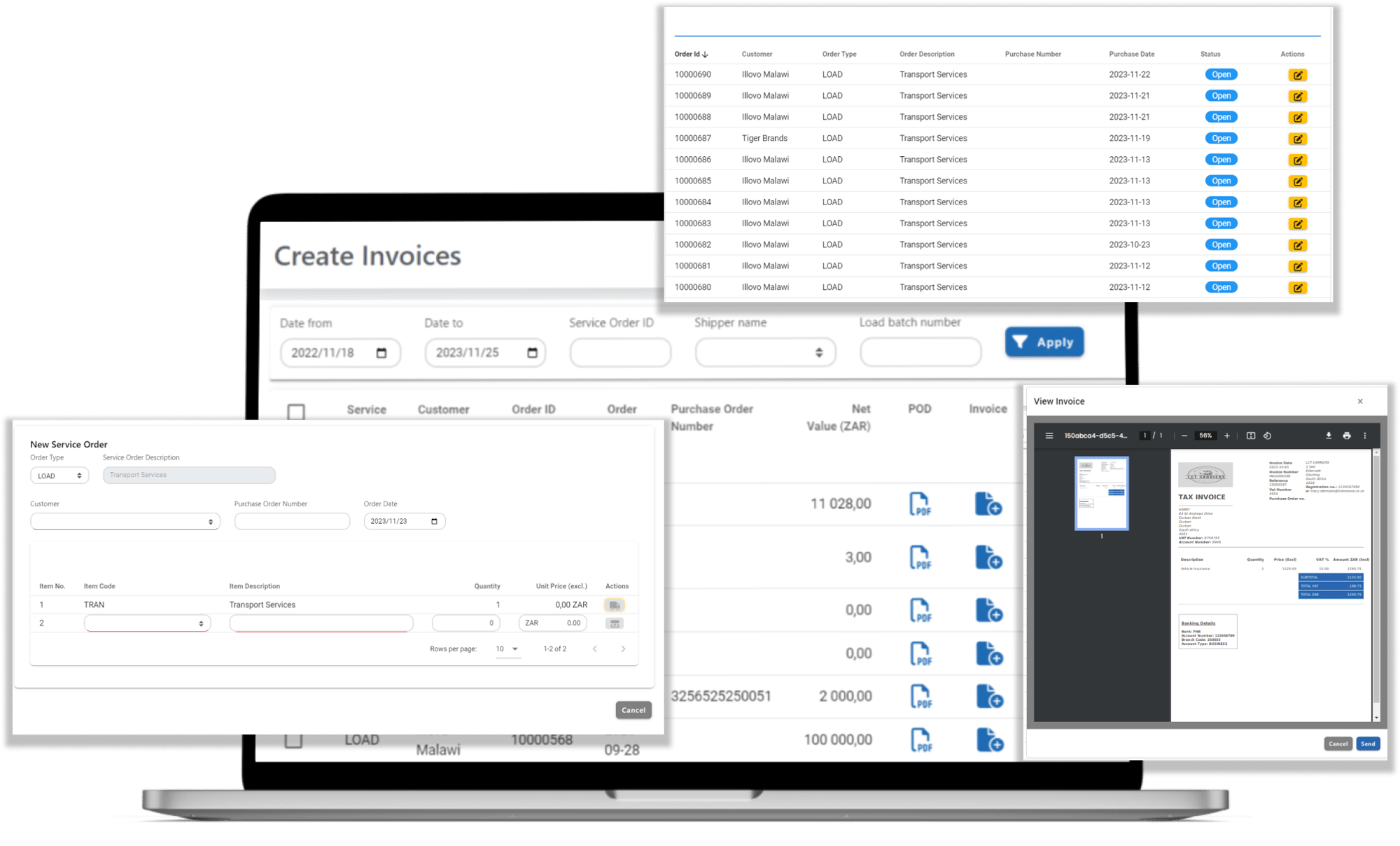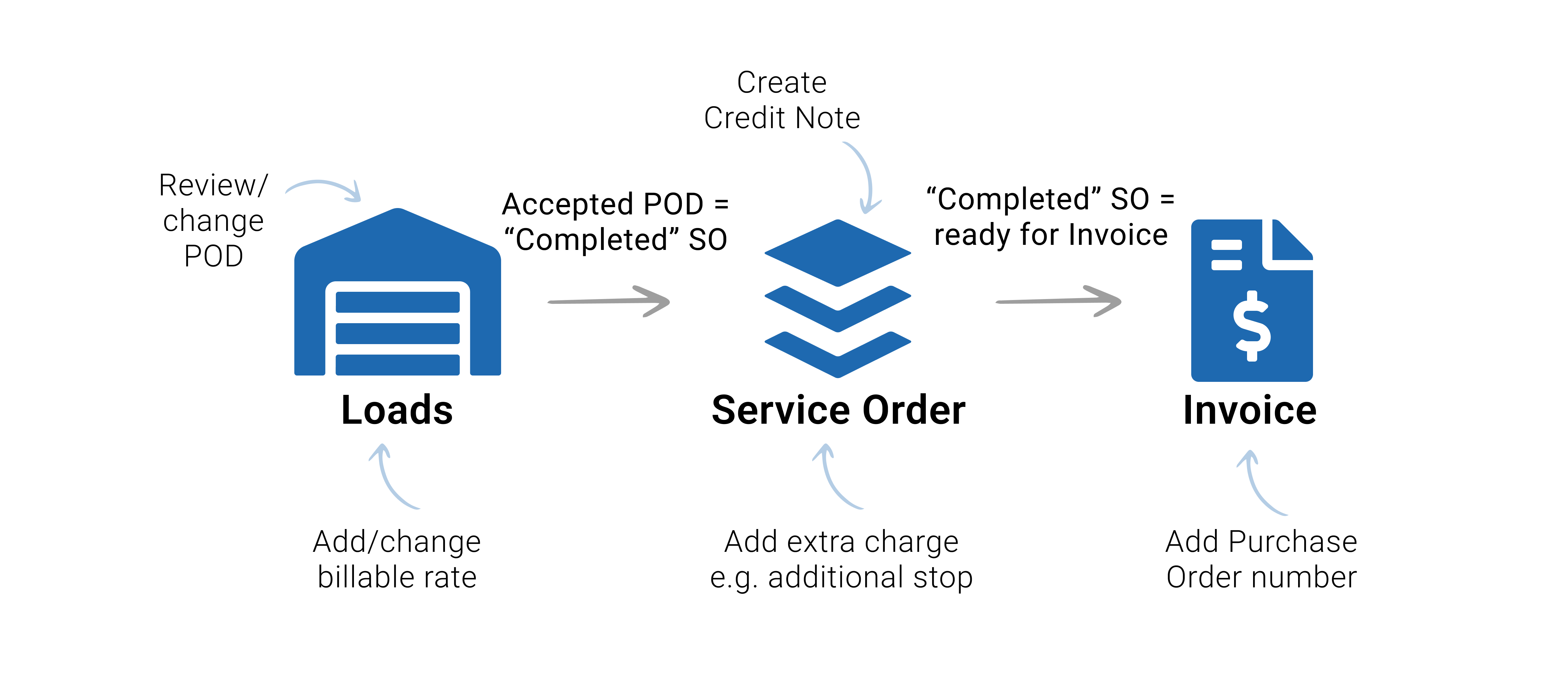Invoicing
Effectively managing your invoicing processes is vital for the business. By following our step-by-step guides, you'll gain a comprehensive understanding of how to utilise Blupath's invoicing capabilities, enabling you to generate, track, and manage invoices with precision.


Loads, Service Orders, & Invoicing
Pro
Service Order Page
- When a load is created, a matching Service Order is also generated. For invoicing, some data comes from the Load (billable rate), and some comes from the Service Order itself (extras, e.g., additional stop, forklift, etc.). These extras are managed by the Item Master in the Setup Menu (link to item master).
- Before a load is delivered and marked as complete, the matching Service Order will have the status 'In-Progress'—you can edit the data, for example, by adjusting the billable rate on the load or adding an extra item to the Service Order, such as an additional stop. The data on a Service Order can be edited right up until an invoice is created from it.
- Only 'Completed' Service Orders can be invoiced—this occurs once the POD documents have been accepted.
Invoicing Page
- The invoicing page displays all the Service Orders that have been completed (i.e., delivered loads with correct documents). From here, you can navigate back to the Service Order and, from there, back to the Load.
- You can add a Purchase Order number to the Service Order on the invoice screen by selecting the checkbox on the left and clicking the 'Update order number' button.
- Here, you can create an invoice from the completed service orders. If any information is missing, it will be highlighted in red on the invoice—this information needs to be added against the customer master data (link to editing a customer).
Understanding Service Orders
Pro
A Service Order (SO) in Blupath represents a service or product delivered to a customer. Blupath offers two default Service Order types: LOAD and SORD, the former for load-related items and the latter for non-load related services. Whenever a Load is generated through the Transportation Management System (TMS), a corresponding Service Order is automatically generated. These Service Orders play a crucial role in invoicing clients for the provided services or products.
Understanding Item Master
Pro
Service Orders help organize items you can charge for, and you set them up in the Item Master menu. For example, under a Service Order like 'Load,' you can specify 'Forklift' as a specific item, so when you send an invoice for a load, the forklift service can be listed as a separate charge
Issuing a Credit Note
Pro
A Credit Note starts off as a Service Order where all the details of the particular credit are added. In order to create a credit note a 'Service Order Type' needs to exist for it. If you need to add a new Service Order Type it can be done in the 'Company Config' in the 'Admin' menu in the 'View Company Account' option. Once the Credit Note has been created in the Service Order menu change the Service Order to status to 'Complete' for it to appear in the Invoice menu. The following guide will show you how to do this.